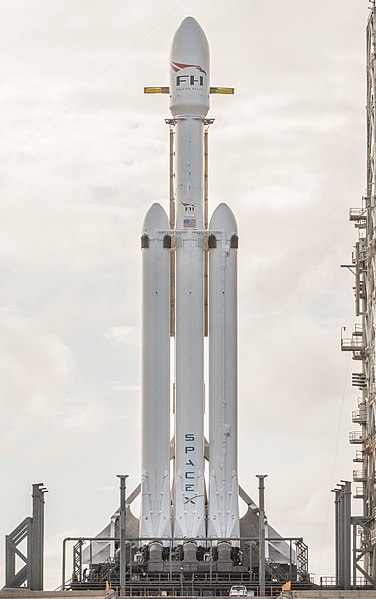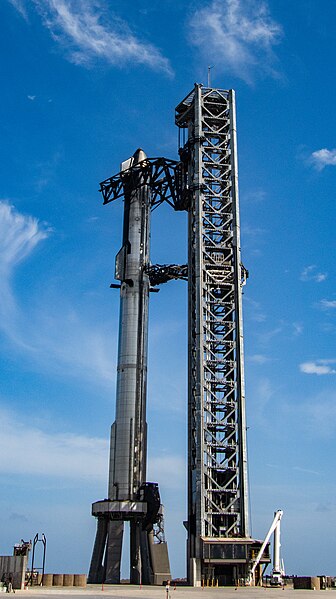SpaceX manufactures launch vehicles to operate its launch provider services and to execute its various exploration goals. SpaceX currently manufactures and operates the Falcon 9 Block 5 family of medium-lift launch vehicles and the Falcon Heavy family of heavy-lift launch vehicles – both of which are powered by SpaceX Merlin engines and employ VTVL technologies to reuse the first stage. As of 2024, the company is also developing the fully reusable Starship launch system, which will replace the Falcon 9 and Falcon Heavy.
Falcon Heavy on pad LC-39A.
Starship prototype in launch configuration: Starship spacecraft sits on top of Super Heavy.
The first Falcon 1 at Vandenberg AFB. This vehicle was removed from VAFB due to delays and eventually launched from Kwajalein.
Grasshopper vehicle in September 2012
Falcon 9 is a partially reusable medium-lift launch vehicle that can carry cargo and crew into Earth orbit, designed, manufactured and launched by American aerospace company SpaceX. It can also be used as an expendable heavy-lift launch vehicle. The first Falcon 9 launch was on 4 June 2010. The first Falcon 9 commercial resupply mission to the International Space Station (ISS) launched on 8 October 2012. In 2020 it became the first commercial rocket to launch humans to orbit and remains the only such vehicle. It is the only U.S. rocket certified for transporting humans to the ISS. In 2022, it became the U.S. rocket with the most launches in history and with the best safety record, having suffered just one flight failure.
A Falcon 9 lifting off from LC-39A, carrying Demo-2
Falcon 9 flight 20 historic first-stage landing at Cape Canaveral, Landing Zone 1, on 21 December 2015
A Falcon 9 v1.0 being launched with a Dragon spacecraft to deliver cargo to the ISS in 2012
The launch of the first Falcon 9 v1.1 from SLC-4, Vandenberg AFB (Falcon 9 Flight 6) in September 2013








